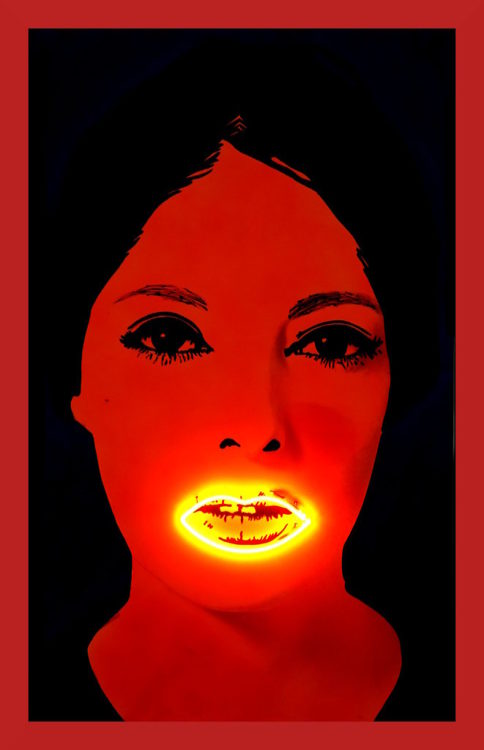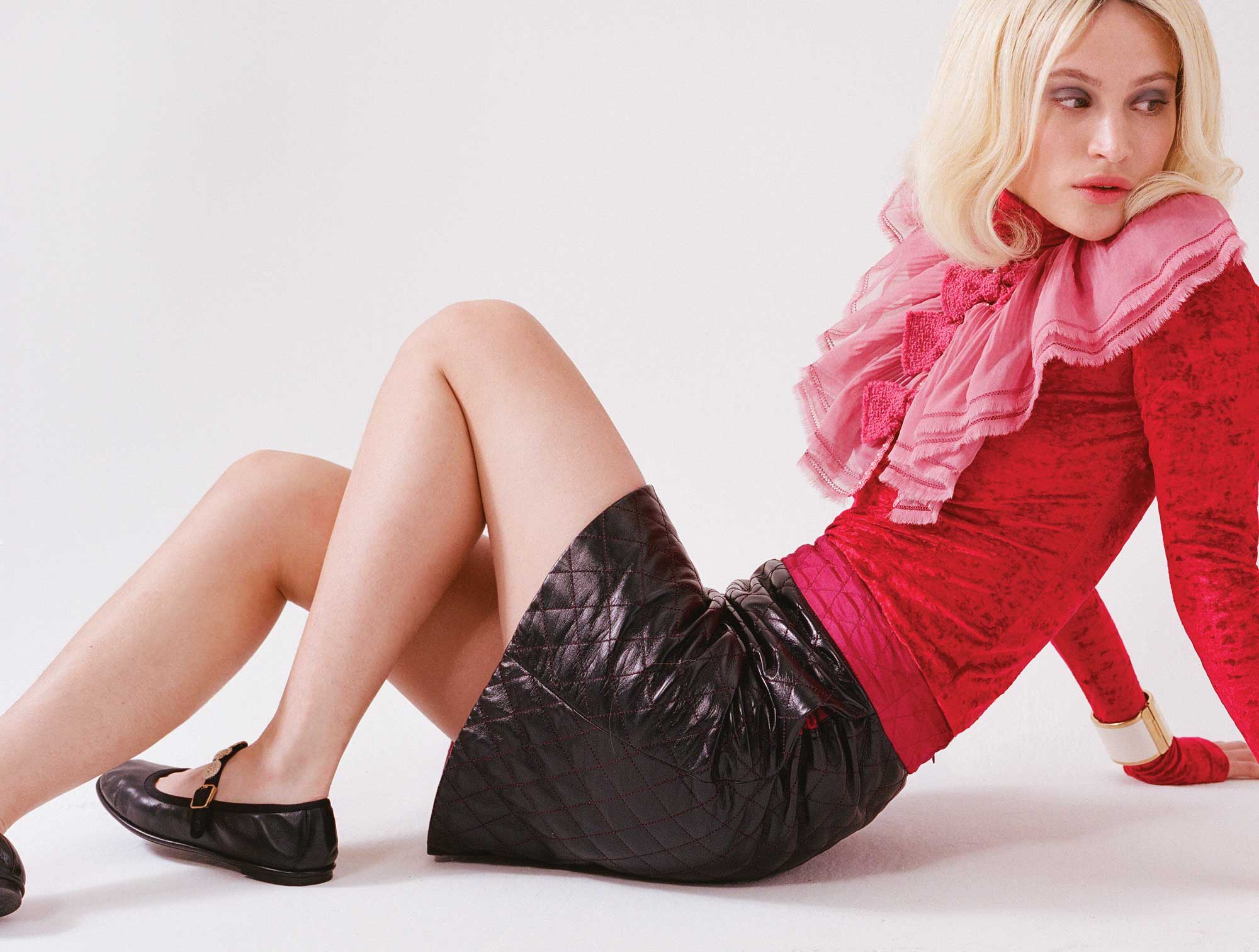Few topics within contemporary fashion are as feverishly discussed as copying, referencing, and re-appropriation. Considering the so-called ‘call-out culture’ that has erupted around these notions, Philippa Snow takes a look at the industry in the context of its creative counterparts—proposing that fashion needs to first and foremost be understood as an art form.
Despite being one of the most imaginative artists of the mid- to late twentieth century, Elaine Sturtevant—who, like a fashion brand, went only by her second name, and who, like certain fashion brands, favoured high-concept provocation over a singular, recognisable aesthetic—is most famous for her genius at stealing. Re-made wholesale, her direct facsimiles of works by big male artists were produced with the intent of questioning what authorship might mean: she borrowed works by Roy Lichtenstein and Robert Rauschenberg, by Marcel Duchamp and Joseph Beuys, refiguring their macho genius by presenting it as part of the conceptual practice of a slightly pissed-off woman. In each work, there were minor and almost invisible variations on the real deal. In the ‘80s, she withdrew completely from the art world and devoted herself to the art of getting really, really good at tennis. “I decided to wait until the [idiots] caught up,” she shrugged. “And, indeed, they did.”
To say that we, the idiots, caught up is something of an understatement. It is difficult to overemphasise how much of our visual understanding of the modern world is based on repetition—in the endless posting and re-posting of both attributed and unattributed images, and in the viral spread of material that might once have been seen only by a very select and very interested audience.

One of the first to catch up with what Sturtevant was doing was the millennial era’s greatest prophet, Andy Warhol. When in 1965 she reproduced his Flowers series—a mere two weeks after he had first exhibited it—he made contact with her and offered to teach her his techniques. If she were hell-bent on creating Warhol silkscreens, he decided, she must make them perfectly. With Warhol’s help, Sturtevant became so adept at making Warhol works that she outgrew the master. Asked by interviewers how he made his silk screens, he began to answer: “Ask Elaine.”
This recursive loop of re-appropriation is in some ways the platonic ideal of artistic or creative image reproduction: creating a symbiotic, mutually-beneficial conceptual circle, ending in both artists’ ultimate enrichment. As is so often the case with an ideal, it is unfortunately not the way appropriation tends to work—making the practice murkier in its morality and its legality from case to case.
The golden rule ought to be more or less the same as the primary rule of comedy: punch up, not down. This makes it fine for Sturtevant to show a variation on a work by Joseph Beuys, but bad taste for a rich, white Instagram artist to repeat the visual signatures of work by Jean-Michel Basquiat, whose paintings consciously and obviously reflect his blackness. If—with an acknowledgement that for some very sniffy art-appreciators, this is not a minor ‘if’—fashion, and high fashion especially, can be seen as a legitimate art form, it follows that the rules of ‘inspiration’ versus ‘theft’ should operate in much the same way on the runway as they do in the white cube.
https://www.instagram.com/p/BjaUeZAn6zJ/
High fashion, like fine art, is sometimes not born of necessity but out of a desire to move audiences, to create something conceptual or something beautiful. Both things, in 2019, are marketed to the one percent as luxury investments, or else marketed in limited editions to the upper middle classes as a status symbol. Both are widely photographed, widely distributed online, and only seen or touched in person by a privileged few.
Both, being irreparably tied to privilege, also have a delicate, complicated relationship with class and race. Cultural appropriation, always rife but not always officially named, only received its title in the ‘80s, and has only really garnered the appropriate attention in the media and online in the last half-decade. If twenty-one-year-old girls now know enough not to attend a Halloween party dressed as Pocahontas, the same cannot always be said of artists like Dana Schwartz, who painted the black murder victim Emmett Till and faced a backlash, or designers like Marc Jacobs, who gave dreadlocks to some of the whitest models in the game. Likewise,where it was once appropriate to talk about ‘white trash chic,’ or for the millionaire heir and downtown provocateur Dash Snow to make art that approximated a dirt-poor-dropout aesthetic, it seems clear that making light of poverty should now be seen as being in bad taste, outdated, and entirely off-trend.
Happily, another function of the internet’s ability to widely circulate an image is the fact that it is possible to circulate critique the same way, making Instagram accounts like @thewhitepube—who addresses theft and rotten practices in fine art—or @diet_prada—which has become celebrity-like for its calling out of designers on their sneaky pilferage of shapes, ideas, and images—a mostly necessary course corrective, both in moral terms and in the sense of keeping the twin industries of art and fashion on their toes.
https://www.instagram.com/p/B0DYj7RFwaH/
Cancellation looms over both individuals and brands like death, the result being twofold: that critics, previously only powerful if they were in the employ of powerful publications, have the ability to make or break careers without the benefit of magazines or major funding, and that artists and designers who might otherwise steal, borrow, or ‘pay homage’ are scared witless. “Diet Prada regularly names and shames brands, designers, and others for fashion copycatting, similarities in design, and, seemingly more and more, for racism, often after tips from its Instagram followers,” an article about the Instagram account from The New York Times explained earlier this year. “With the help of their fans, Diet Prada’s founders have helped decode the sometimes cryptic fashion industry: rife with insider references, unsubtle so-called homages and hushed-up bad behavior.”
“Rife with insider references,unsubtle so-called homages and hushed-up bad behaviour” might just as easily describe the art world, and the shortcomings of Diet Prada might as easily occur in coverage of the art world, too—while the account has called out Dolce and Gabbana, rightly, for their racism, its coverage of Prada’s controversies have been kid-glove soft. “[We] can be completely subjective and definitely not immune to personal bias at times,” the account’s founders Tony Liu and Lindsey Schuyler admitted in the same piece in the NYT. “There are certain designers that we absolutely love and see as innovators, which we tend to look out for.”
Considered as an art form, it is only logical that fashion would produce the same emotional and personal biases as fine art, given that at least half its purpose is to stoke the fires of passion. Miuccia Prada is more or less as untouchable and as widely loved in her own field as the visual artist Gerhard Richter, whose canvases are quite often based on projected found photographs, and who was, until a few years ago, the most expensive living artist in the world. Objectivity, when faced with creative expression, is almost impossible—a fact that led the journalist and lawyer Julie Zerbo of The Fashion Law to ask of Diet Prada: “Who watches the watchmen?”
Zerbo has a point; while countering the fashion industry’s somewhat vampiric tendency to steal from minorities and from minor or more minor brands is admirable, killing all desire to experiment is risky, tantamount to censorship. At the risk of sounding a little like a right-wing, middle-aged internet commenter incensed about the preservation of ‘freedom of speech,’ art does not truly thrive without the oxygen of scandal, or the occasional opportunity to be perverse.
When for Celine’s Autumn/Winter 2019, Hedi Slimane eschewed the miniskirts and rocker vibes he had been roundly criticised for in favour of plundering the label’s archives, it was a bratty fuck-you to his critics, but it was also amusing— the equivalent of Sturtevant’s copies of Warhol, initially made as if to say, “if this is what you art-world people like, I’ll give it to you,” being sanctioned by the man himself. Contrast this with Gucci stealing the faux-Gucci looks created by designer Dapper Dan—a Harlem-born black man who has served time in prison in addition to being a genius streetwear innovator— making for clothing that was conceptually interesting but morally repugnant.
When the model Cara Delevingne produced and sold a sweatshirt that proclaimed the future to be female, she was doing so unauthorisedly, stealing the slogan from a smaller brand called Otherwild, who were in turn producing it as a legally legitimate homage to merchandise sold by NYC’s first women’s bookshop, Labyris Books. Ditto the artist Andrea Bowers, who ripped images of #MeToo victims from the Internet and printed them at showroom scale for Art Basel 2019, then ended up forced to apologise and remove the work after being accused of aggravating trauma—the line between noble intentions and the commercialisation of one or more other women’s feminism blurred into oblivion.
“You can’t put the genie back in the bottle,” Kenneth Goldsmith told Frieze in a roundtable on appropriation.“Trying to police and enforce the way images are used is like trying to patrol the universe. Free-floating artefacts have their own agency, which are dictated by the architecture of the network, not by your attempts to wrestle them into submission.”
Those of us concerned about the idea of appropriation, and specifically about the theft of ideas by those in positions of power or privilege, are less concerned with returning the genie to the bottle than identifying who exactly rubbed the bottle in the first place. Executed gracefully, it should be possible for readymades and Dadaist appropriations to appear in fashion shows, allowing for the same freedom of self-expression as fine artists have enjoyed since Marcel Duchamp. Although in fashion, theft and replication are increasingly called out at lightning speed, it ought to be the case that giants stealing from or aping other giants is fair game in any discipline; ditto a plucky up-start spoofing an already-titan brand, the way Sherrie Levine, in art, stole from Claude Monet. Policing an art form, up to and including fashion, is not an exact or easy science. What it takes is empathy, an idea of the difference between right and wrong, and common sense, so that instead of being subject to the tyranny of two or three unchecked and very online critics, the work is the responsibility of anyone even tangentially related to the industry. It also takes a little instinct, so that what results feels new rather than derivative, alive rather than dead. “One of two things happens,” Sturtevant once said, describing the experience of coming face-to-face with an appropriated image. “Your head either goes forward, or it goes backward. If it goes backward, you dismiss the work as a worthless copy. Forward is, ‘Oh, my God, what is that? How does that work?’”
Header image via Kim Shui and FashionNova



